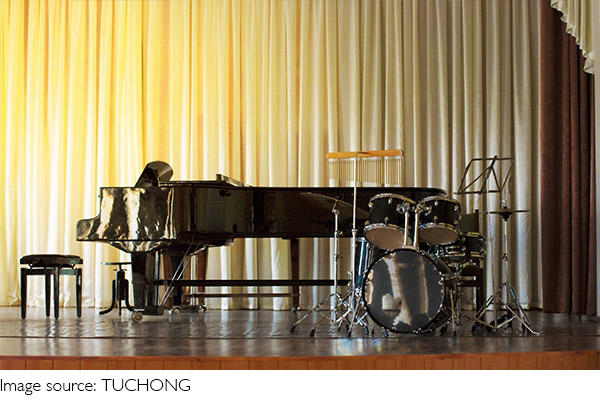Ticket Profit

Organizing a concert is no small feat. It involves intricate planning, collaboration, and coordination with multiple vendors and stakeholders. For event organizers, understanding the financial anatomy of a concert is crucial for maximizing profits and ensuring successful events.
Have you ever wondered how concerts make money and where the revenue goes? Let's dive into the financial breakdown of a concert's revenue and expenses, so we, as concert enthusiasts and organizers, can appreciate the effort that goes into every show.

Revenue Breakdown: Ticket Sales vs Sponsorships
Concerts typically generate revenue from two primary sources: ticket sales and sponsorships. Depending on the scale of the event, the popularity of the artist, and the location, these revenue streams can fluctuate. On average, however, the breakdown tends to look like this:
That summer glow might actually be speeding up your wrinkles—here’s how to fight back!
Unveil The Tactics Scammers Use To Trick You Through Call Merging! Stay Sharp And Protect Your Wallet!
Master Holiday Spending With Smart Budget Tips And Avoid Debt This Season!
Experience Peace, Lower Costs, And A Stronger Sense Of Community In Rural Areas—Here’s Why It’s The Best Choice!
Unlock Key Insights On How Financial Markets Shape Your Wealth, Investments, And Future Success With These Powerful Tips!
Discover the Secret Benefits of Hydrotherapy! How It Can Boost Your Health, Improve Your Skin, and More!
• Ticket Sales (60-70%):This is the main source of income for most concerts. The price of tickets varies based on the artist's popularity, the venue's size, and seating arrangements (e.g., VIP, general admission). International artists or larger productions might contribute more to ticket sales, with premium tickets offering the bulk of the income.
• Sponsorships (30-40%): Sponsorships are the second-largest contributor to concert revenue. Companies, particularly those in industries like beverages, telecom, and technology, sponsor events for brand exposure and marketing opportunities. Larger events typically attract bigger sponsorship deals, which can help boost the overall revenue significantly.

Expense Breakdown: Vendor Charges
After the revenue is generated, the concert's expenses are allocated to various vendors and service providers. These expenses are essential for making the event run smoothly and safely. Here's a closer look at how the expenses break down:
1. Venue Management (10-15%): The venue takes a significant portion of the budget, with premium venues in metro cities charging up to 15% of the total revenue. Smaller venues in tier 2 cities might charge around 10%. The venue's location, size, and facilities play a huge role in determining this cost.
2. Sound & Lighting Vendors (15-20%): Sound and lighting are critical to the overall experience. For concerts with high-end production or international artists, the cost of sound and lighting can range from 15-20% of total revenue. These investments ensure high-quality acoustics and visual effects, making the event more enjoyable for the audience.
3. Artist & Talent Fees (20-30%): Artist fees are often the largest expense. For popular or international artists, their fees can take up to 30% of the total revenue. This cost is influenced by the artist's popularity, their performance duration, and the complexity of the production.
4. Event Management Team (5-10%): The event management team is responsible for overseeing the entire event from start to finish. Their charges typically account for 5. 10% of the total revenue. Their work includes managing schedules, coordinating with vendors, and ensuring everything runs smoothly.
5. Security & Safety (3-5%): Security is essential for crowd management and safety, and they charge around 3-5% of the total revenue. Ensuring that the artists, staff, and attendees are safe is a crucial aspect of any concert.
6. Licenses, Permits, and Insurance (2-4%): Legal requirements, such as permits and insurance, account for 2-4% of total revenue. These costs cover everything from fire safety to public liability insurance to ensure that the concert complies with regulations and is safe for everyone involved.
7. Catering & Hospitality (3-5%): Catering costs are usually incurred for providing food and beverages for the artists and VIP guests. Depending on the scale of the event, this expense can increase, particularly if food and drink services are extended to the general audience.
8. Marketing & Promotions (5-10%): Promotion is key to driving ticket sales and awareness. Digital marketing, social media campaigns, print media, and public relations typically take up 5-10% of the total revenue. Larger events often invest more in marketing to boost visibility and sales.
9. Logistics & Operations (2-4%): The logistics involved in setting up a concert stage, transporting equipment, and managing on-the-ground operations consume 2-4% of total revenue. These costs can vary depending on the venue's location and the complexity of the stage setup.
10. Merchandise Vendors & Sponsorship Management (2-3%): Merchandise sales and managing sponsors also account for around 2-3% of the total revenue. Concert merchandise, especially from popular artists, can sometimes bring in additional revenue, while sponsors may need to be carefully managed to integrate their branding effectively into the event.
Cost and Profit Margins
Considering the breakdown of expenses, concert organizers typically spend 65-75% of the total revenue on vendor charges. This leaves a profit margin of about 25-35%, depending on various factors like ticket sales, sponsorship deals, and the scale of the event. Larger events, especially those featuring international artists or being held in major cities, tend to have higher costs. On the other hand, smaller, localized concerts may enjoy lower expenses and therefore higher margins.
The three largest cost components—artist fees, sound and lighting, and venue management—account for more than half of the total revenue. To ensure profitability, concert organizers need to carefully balance these significant expenses with ticket sales and sponsorships.
Balancing Costs and Revenue
As we've seen, organizing a concert is a delicate balancing act between generating revenue and managing costs. Effective cost management, strong sponsorship deals, and robust ticket sales are essential to ensure the event's financial success. With these key insights, we can better appreciate the work that goes into bringing live music and entertainment to audiences.
Lykkers, we hope you now have a better understanding of how concerts make money and the financial intricacies that go into them. The next time you attend a concert, you'll have a deeper appreciation for the planning and effort behind the scenes!

 · Information Team
· Information Team